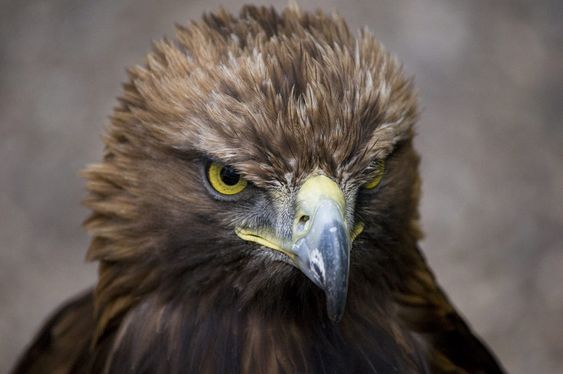The mighty steppe eagle is the real ruler of the plains. Nothing can hide from his keen gaze, and the frantic speed with which he dives leaves no chance for his potential prey. It is not for nothing that the steppe eagle is a symbol of pride among many peoples – it is impossible not to admire this bird.

- He hunts mainly small animals, but sometimes he also eats insects. In this case, he lands and behaves like some kind of domestic chicken, diligently collecting prey and digging out the ground with powerful paws.
- Males of the steppe eagle never incubate eggs, leaving this occupation for the female. The male hunts at this time and brings food to his other half.
- The size of the nest of the steppe eagle can be very impressive – more than a meter in diameter.
- Diving for prey, this bird can reach speeds above 300 km / h.
- The steppe eagle spends practically no energy on staying in the air, so it can soar in the air for hours without getting tired.
- Features of the geometry of the wings of the steppe eagles formed the basis of many developments in the field of aviation. The study of these birds has helped create much more efficient systems.
- Steppe eagles have not one eyelid, but two. One protects the eyeballs from wind and dust, while the other is used during sleep.
- These birds sometimes die when they sit on high-voltage wires and receive an electric shock.
- The life expectancy of steppe eagles can reach forty years or more.
- Steppe eagles usually mate once and for life. But in the event of the death of a partner, the second member of the pair can find a new one.
- There are 5 times more sensitive cells in eagle eyes than in human eyes. This explains their incredible visual acuity.
- In the transparent air, the steppe eagle is able to see a mouse at a distance of up to two kilometers.
- Usually, the female of this bird lays only one egg. Sometimes two, very rarely three.
- In the absence of more suitable food, the steppe eagle may even temporarily become a scavenger.
- Even an amateur can easily distinguish the steppe eagle from any other – almost all individuals of this species have a noticeable red spot on the back of the head.
- By the shade of plumage, you can roughly determine the age of the steppe eagle. Their feathers begin to darken at the age of about four years so that adult birds are always darker than their young relatives.
- Despite all efforts made, steppe eagles are threatened with complete extinction, as their population continues to decline.
- Steppe eagle chicks learn to fly at the age of two months.
